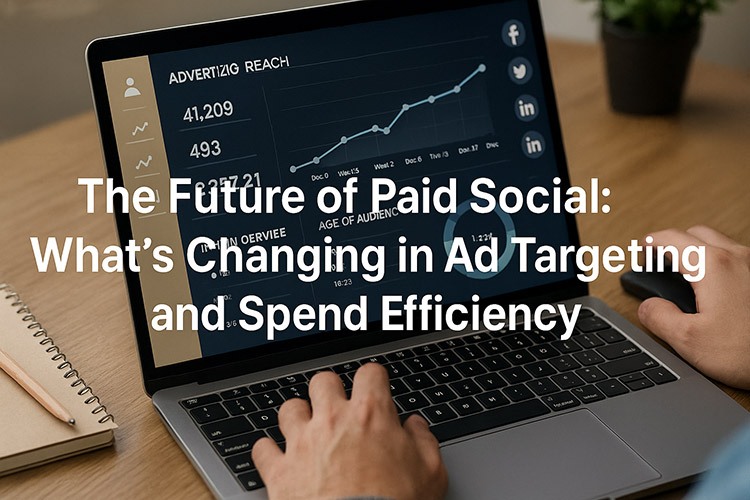As we dive deeper into 2025, Google has once again redefined the digital playing field with its latest core algorithm update. This update isn’t just another minor adjustment—it’s a major shift that directly impacts how websites are evaluated, ranked, and discovered across search engines.
For digital marketers, business owners, and SEO professionals, understanding the Google 2025 core update is critical to maintaining visibility and relevance in organic search results. In this blog, we’ll break down what the update involves, its implications on your website, and what you can do to align your strategy.
What Is the Google 2025 Core Update All About?
Unlike regular tweaks that target specific parts of the search algorithm, core updates are broad and foundational. The Google 2025 core update focuses on enhancing how content is evaluated based on relevance, authority, user experience, and search intent. It seeks to deliver more meaningful and accurate results by favoring websites that genuinely meet user needs over those that game the system with outdated tactics.
The update primarily evaluates:
- Content quality and depth
- Author experience and authority
- User engagement metrics
- Page usability and load performance
- Search intent alignment
SEO Algorithm Impact: What’s Changing?
The algorithm changes in 2025 are significant for several reasons. Here are the most impactful ones:
- Search Intent Takes Center Stage
Search intent has always mattered, but now it’s the heart of the algorithm. Pages that directly address the user’s query in a clear, concise, and meaningful way are getting preference. Irrelevant keyword stuffing or shallow content is no longer tolerated.
- More Weight on Experience and Authority
Google is placing added emphasis on first-hand experience and subject-matter expertise. The E-E-A-T framework (Experience, Expertise, Authoritativeness, and Trustworthiness) continues to evolve. Now, content written with personal insight and real-world data is outranking generalized content.
- Fresh, Regularly Updated Content Performs Better
Stale websites are being pushed down the rankings. Frequent updates, content additions, and page optimizations now play a larger role in your SEO health. Keeping your content calendar active is no longer optional—it’s essential.
- Visual and Structural Improvements
Sites that include original images, infographics, proper heading structures, internal links, and enhanced readability are ranking better. Google’s crawlers now recognize and reward user-centric formatting.
Website Ranking Changes You Can Expect
Many websites are already seeing fluctuations—some positive, some not. If you’ve noticed a shift in your traffic or keyword positions, here are a few common reasons behind the website ranking changes:
- You haven’t updated your top-performing content in months
- Your pages are missing schema or structured data
- You rely heavily on AI-generated or scraped content
- There’s a lack of author credentials and citations
- Your website loads slowly or has poor mobile usability
- Bounce rates are high, or session durations are low
Even websites that have historically performed well are seeing changes if their content isn’t aligned with this new wave of user-first indexing.
Action Plan: How to Adapt Your SEO Strategy
To thrive in the post-update world, your SEO efforts must go beyond keywords and backlinks. Here’s how to future-proof your rankings:
- Audit Your Existing Content
Start with a full content audit. Identify outdated, duplicate, or low-performing pages. Refresh or merge them with newer, more comprehensive articles. Make sure each page has a clear purpose and meets a specific search intent.
- Double Down on Authoritative Content
Use original research, expert insights, and unique perspectives in your blog posts and landing pages. Google rewards content that clearly demonstrates credibility and human insight.
- Upgrade Your On-Page Elements
Optimize meta titles, descriptions, alt text, and heading hierarchies. Ensure pages are mobile-optimized, fast-loading, and free from intrusive pop-ups or poor UX design.
- Build Topic Clusters
Instead of writing unrelated blog posts, focus on creating topic clusters—groups of interconnected content pieces that revolve around a central subject. This signals deep subject knowledge to Google.
- Implement Structured Data
Use schema markup to help Google understand your content. Structured data improves your chances of earning featured snippets, rich results, and other SERP enhancements.
- Prioritize Helpful Content Over Volume
Every piece of content should solve a problem, answer a question, or deliver value. Don’t publish just for the sake of frequency. Publish with purpose.
Realigning KPIs After the Update
Many businesses measure SEO success through vanity metrics like impressions or clicks. While these are useful, post-update SEO requires a stronger focus on:
- Engagement rates
- Time on page
- Conversion optimization
- Topical relevance
- Return visitor growth
Refining these KPIs ensures your strategy aligns with what Google now sees as meaningful performance.
Should You Be Worried About Traffic Loss?
If you’ve seen a dip in rankings, don’t panic. Core updates are meant to improve the quality of search, not penalize. Think of them as feedback loops. A temporary drop is often a signal that your content or site structure needs refinement—not punishment.
What matters is how you respond. A proactive, quality-first approach will always win in the long run.
Final Thoughts: Evolve, Don’t React
The Google 2025 core update is not a disruption—it’s a directional change. It reminds us that SEO is about users first, search engines second. Websites that educate, inspire, and satisfy their audiences will not just survive this update—they’ll thrive because of it.
At We Digital Creatives, we specialize in decoding algorithm shifts and building agile SEO strategies that keep you ahead. From technical audits to content planning and on-page optimizations, we help you navigate change with confidence.




